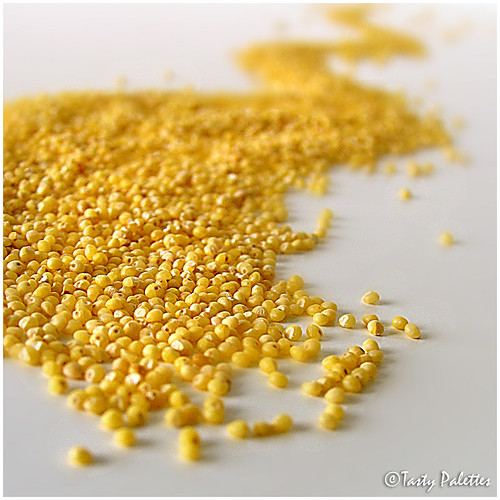Announcing JFI – Oct ’08 – Whole Grains
Whole grains or foods made from them contain all the essential parts and naturally-occurring nutrients of the entire grain seed. If the grain has been processed (e.g., cracked, crushed, rolled, extruded, and/or cooked), the food product should deliver approximately the same rich balance of nutrients that are found in the original grain seed.
Whole grains are the seeds of certain plants that retain all the three parts of the kernel viz., bran, germ and endosperm. These fiber rich grains are also good source of complex carbohydrates, vitamins and minerals, making them an integral part of a healthy, low-fat diet. We all know that a high-fiber diet is not only filling, but also keeps one full for a long time. Also, eating whole grains significantly lowers the risk of heart disease and diabetes. These are only a few of many rewards a wholesome diet offers. With such unrivaled health benefits, there is no better time than now to include more whole grains in our diet.
Whole grains have been a part of older civilizations. They have been a reliable source of food, in addition to being nutrient rich. Our knowledgeable ancestors included them in their everyday diets. Though this practice has been lost over time and has been replaced with refined grains and flours, people are now becoming aware of the importance of a nutrient dense diet.
'Whole Grains' is my choice of ingredient for Jihva for Ingredients. It would only sound silly if I introduce this admired, popular event to my fellow bloggers. Indira who authors the famed and celebrated blog Mahanandi, is the creator of this event. Each month the hosts choose a natural ingredient and bloggers enthusiastically respond to it. What better natural ingredient can there be than whole grains?
Taking this event as an opportunity, I invite you all to join me in rediscovering the value of whole grains. Here is a list of whole grains that I know of. I am sure this list is partial. Please let me know if there are others.
- Amaranth
- Barley
- Buckwheat
- Bulgur (cracked wheat)
- Brown rice
- Corn
- Millet (Foxtail, pearl and finger millet)
- Oats
- Quinoa
- Rye
- Teff
- Triticale
- Wheat (bulgur, farro, spelt, kamut, cracked wheat)
- Wild rice
Here are the guidelines for your participation:
- Prepare a vegetarian/vegan recipe featuring one or more whole grains. Any cuisine, any course is accepted. Eggs are allowed too. If you would like to share information about whole grain, I would gladly include the article in the roundup.
- Post the recipe/article in your blog between now and 30th Sep ’08. Provide a link back to this announcement.
- Send a mail with JFI – Whole Grains in the subject line to tastypalettes@gmail.com with the following details.
- Your name
- Your blog name
- Name of the entry
- URL of your post
- An optional photo that is 800 pixels wide or 800 pixels long (not both)
- If you don’t have a blog but would like to participate, send an email with your name, recipe and an optional photo. I will include in the roundup.
- Older posts are accepted if they are re-posted with a link to this announcement.
- Feel free to use the logo in your post.















